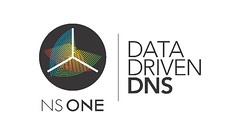Author Archives: Todd Hoff
Author Archives: Todd Hoff

This is Part 2 of a guest post by Kris Beevers, founder and CEO, NSONE, a purveyor of a next-gen intelligent DNS and traffic management platform. Here's Part 1.
Unit testing is hammered home in every modern software development class. It’s good practice. Whether you’re doing test-driven development or just banging out code, without unit tests you can’t be sure a piece of code will do what it’s supposed to unless you test it carefully, and ensure those tests keep passing as your code evolves.
In a distributed application, your systems will break even if you have the world’s best unit testing coverage. Unit testing is not enough.
You need to test the interactions between your subsystems. What if a particular piece of configuration data changes – how does that impact Subsystem A’s communication with Subsystem B? What if you changed a message format – do all the subsystems generating and handling those messages continue to talk with each other? Does a particular kind of request that depends on results from four different backend subsystems still result in a correct response after your latest code changes?
Unit tests don’t answer these questions, Continue reading


This is Part 1 of a guest post by Kris Beevers, founder and CEO, NSONE, a purveyor of a next-gen intelligent DNS and traffic management platform.
Every tech company thinks about it: the unavoidable – in fact, enviable – challenge of scaling its applications and systems as the business grows. How can you think about scaling from the beginning, and put your company on good footing, without optimizing prematurely? What are some of the key challenges worth thinking about now, before they bite you later on? When you’re building mission critical technology, these are fundamental questions. And when you’re building a distributed infrastructure, whether for reliability or performance or both, they’re hard questions to answer.
Putting the right architecture and processes in place will enable your systems and company to withstand the common hiccups distributed, high traffic applications face. This enables you to stay ahead of scaling constraints, manage inevitable network and system failures, stay calm and debug production issues in real-time, and grow your company and product successfully.
I’ve been building globally distributed, large scale applications for a long time. Way back in the first dot-com boom, I bailed on college classes for Continue reading
Hey, it's HighScalability time:

 Peter Thiel, VC, PayPal co-founder, early Facebook investor, and most importantly, the supposed inspiration for Silicon Valley's intriguing Peter Gregory character, argues in his book Zero to One that a successful business needs to make a product that is 10 times better than its closest competitor.
Peter Thiel, VC, PayPal co-founder, early Facebook investor, and most importantly, the supposed inspiration for Silicon Valley's intriguing Peter Gregory character, argues in his book Zero to One that a successful business needs to make a product that is 10 times better than its closest competitor.
The title Zero to One refers to the idea of progress as either horizontal/extensive or vertical/intensive. For a more detailed explanation take a look at Peter Thiel's CS183: Startup - Class 1 Notes Essay.
Horizontal/extensive progress refers to copying things that work. Observe, imitate, and repeat. The one word summary for the concept is "globalization.” For more on this PAYPAL MAFIA: Reid Hoffman & Peter Thiel's Master Class in China is an interesting watch.
Vertical/intensive progress means doing something genuinely new, that is going from zero to one, as apposed to going from one to N, which is merely globalization. This is the creative spark. The hero's journey of over coming obstacles on the way to becoming the Master of the Universe you were always meant to be.
We see this pattern with Google a lot. Google often hits scaling challenges long before anyone else and because they have a systematizing culture they Continue reading

Jonathan Willis, software developer by day and superhero by night, asked an interesting question via Twitter on StackOverflow:
tl;dr Many Rails apps or one Vertx/Play! app?
I've been having discussions with other members of my team on the pros and cons of using an async app server such as the Play! Framework (built on Netty) versus spinning up multiple instances of a Rails app server. I know that Netty is asynchronous/non-blocking, meaning during a database query, network request, or something similar an async call will allow the event loop thread to switch from the blocked request to another request ready to be processed/served. This will keep the CPUs busy instead of blocking and waiting.I'm arguing in favor or using something such as the Play! Framework or Vertx.io, something that is non-blocking... Scalable. My team members, on the other hand, are saying that you can get the same benefit by using multiple instances of a Rails app, which out of the box only comes with one thread and doesn't have true concurrency as do apps on the JVM. They are saying just use enough app instances to match the performance of one Play! application (or however many Play! apps Continue reading
Hey, it's HighScalability time:

This is a guest repost by Mark Russinovich, CTO of Microsoft Azure (and novelist!). We all benefit from a vibrant competitive cloud market and Microsoft is part of that mix. Here's a good container overview along with Microsoft's plan of attack. Do you like their story? Is it interesting? Is it compelling?
You can’t have a discussion on cloud computing lately without talking about containers. Organizations across all business segments, from banks and major financial service firms to e-commerce sites, want to understand what containers are, what they mean for applications in the cloud, and how to best use them for their specific development and IT operations scenarios.
From the basics of what containers are and how they work, to the scenarios they’re being most widely used for today, to emerging trends supporting “containerization”, I thought I’d share my perspectives to better help you understand how to best embrace this important cloud computing development to more seamlessly build, test, deploy and manage your cloud applications.
In abstract terms, all of computing is based upon running some “function” on a set of “physical” resources, like processor, memory, disk, network, etc., to accomplish a task, whether a Continue reading


This is a guest post by Olivier Paugam, SW Architect for the Autodesk Cloud. I really like this post because it shows how bits of infrastructure--Mesos, Kafka, RabbitMQ, Akka, Splunk, Librato, EC2--can be combined together to solve real problems. It's truly amazing how much can get done these days by a small team.
I was tasked a few months ago to come up with a central eventing system, something that would allow our various backends to communicate with each other. We are talking about activity streaming backends, rendering, data translation, BIM, identity, log reporting, analytics, etc. So something really generic with varying load, usage patterns and scaling profile. And oh, also something that our engineering teams could interface with easily. Of course every piece of the system should be able to scale on its own.
I obviously didn't have time to write too much code and picked up Kafka as our storage core as it's stable, widely used and works okay (please note I'm not bound to using it and could switch over to something else). Now I of course could not expose it directly and had to front-end it with some API. Without thinking much I also Continue reading
Hey, it's HighScalability time:
We’ve had computation using slime mold and soap film, now we have computation using water droplets. Stanford bioengineers have built a “fully functioning computer that runs like clockwork - but instead of electrons, it operates using the movement of tiny magnetised water droplets.”
By changing the layout of the bars on the chip it's possible to make all the universal logic gates. And any Boolean logic circuit can be built by moving the little magnetic droplets around. Currently the chips are about half the size of a postage stamp and the droplets are smaller than poppy seeds.
What all this means I'm not sure, but pavo6503 has a comment that helps understand what's going on:
Logic gates pass high and low states. Since they plan to use drops of water as carriers and the substances in those drops to determine what the high/low state is they could hypothetically make a filter that sorts drops of water containing 1 to many chemicals. Pure water passes through unchanged. water with say, oil in it, passes to another container, water with alcohol to another. A "chip" with this setup could be used to purify water where there are many contaminants you want separated.